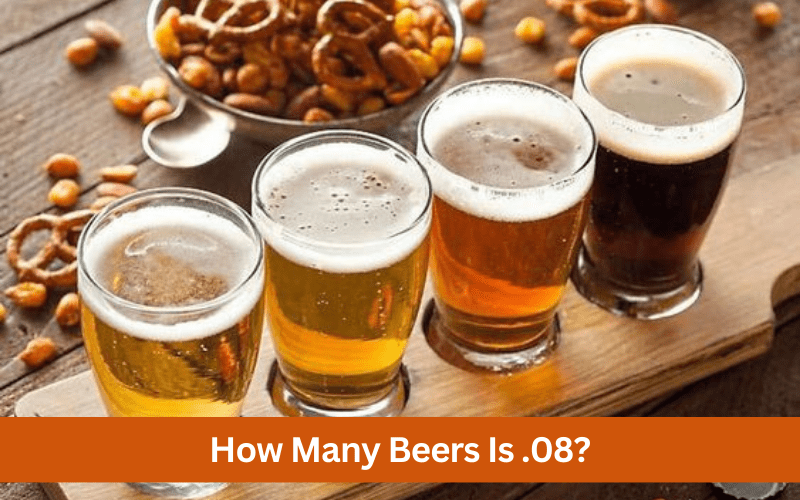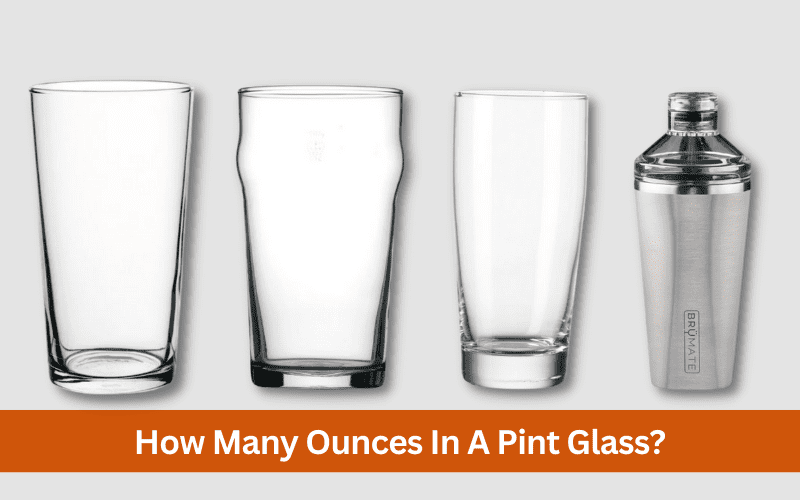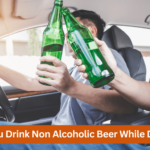How many beers is .08? This is a question that many people may ask themselves before getting behind the wheel after a night out with friends. As someone who has personally struggled with this issue, I can tell you that it’s not always easy to know when you’ve had too much to drink. As many researches, it may take 4-5 beers to reach 0.08 and make you legally drunk. One minute you’re having a good time, and the next, you’re being pulled over by a police officer. The reality is that drinking and driving is a dangerous and potentially deadly combination. In this article, we will explore the legal limit for driving and how many beers is 08. So, let’s dive in and learn more about this important topic.
What is BAC?
BAC [1] stands for Blood Alcohol Content, which is a measure of the amount of alcohol present in a person’s bloodstream. It is typically expressed as a percentage and is used to determine the level of alcohol intoxication. BAC is influenced by a variety of factors and commonly used in law enforcement to determine if a person is driving under the influence (DUI) and can have legal consequences if found above the legal limit.
Why is BAC a Matter?
BAC is a matter of concern for several reasons:
- Driving safety: High BAC levels impair a person’s ability to drive safely, leading to an increased risk of accidents, injuries, and fatalities on the road.
- Legal consequences: In most countries, driving with a BAC above the legal limit is a criminal offense that can result in fines, license suspension, and even imprisonment.
- Health risks: High BAC levels can have negative health consequences, such as alcohol poisoning, liver damage, and increased risk of heart disease and cancer.
- Personal safety: High BAC levels can impair judgment and increase the risk of engaging in risky behaviors such as violence, sexual assault, and other forms of dangerous behavior.
- Public safety: High BAC levels can result in disruptive behavior, disturbances, and even crimes, leading to safety concerns for both the individual and the community.
What is a Standard Drink?
A standard drink is a unit of measurement used to quantify the amount of alcohol in a serving of an alcoholic beverage. The definition of a standard drink may vary by country, but it generally refers to a drink that contains a certain amount of pure alcohol. In the United States, a standard drink is typically defined as any drink that contains 14 grams of pure alcohol, which is the equivalent of:
- 12 fluid ounces of regular beer (about 5% alcohol)
- 5 fluid ounces of wine (about 12% alcohol)
- 1.5 fluid ounces of distilled spirits (about 40% alcohol)
It is necessary to note that many alcoholic beverages are served in larger containers or with higher alcohol content than the standard drink, which can contribute to higher levels of BAC and increase the risk of negative consequences. Understanding what constitutes a standard drink can help individuals make informed decisions about their drinking habits and monitor their BAC levels more accurately.
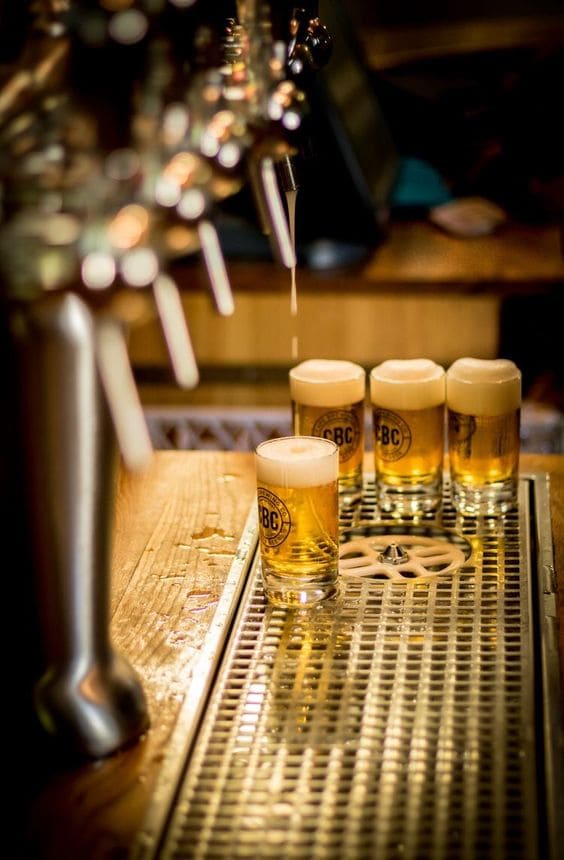
What Affects BAC?
Several factors can affect a person’s Blood Alcohol Content (BAC), including:
- Number of standard drinks: The more alcohol a person consumes, the higher their BAC will be.
- Drinking habits: The amount of time in which drinks are consumed can affect BAC, as well as other factors such as binge drinking or drinking on an empty stomach.
- Body weight: People with a higher body weight generally have a lower BAC than those with a lower body weight, as alcohol is distributed throughout the body’s water content.
- Water composition: People with higher water content in their bodies tend to have a lower BAC than those with less water content.
- Enzyme production and levels: The enzymes responsible for breaking down alcohol in the body can vary among individuals and can affect BAC levels.
- Biological sex: People assigned male at birth generally have a higher tolerance for alcohol than people assigned female at birth due to differences in hormone levels.
- Medications: Some medications can interact with alcohol and increase BAC levels.
- Food: Eating food while drinking can help slow down the absorption of alcohol and reduce BAC levels.
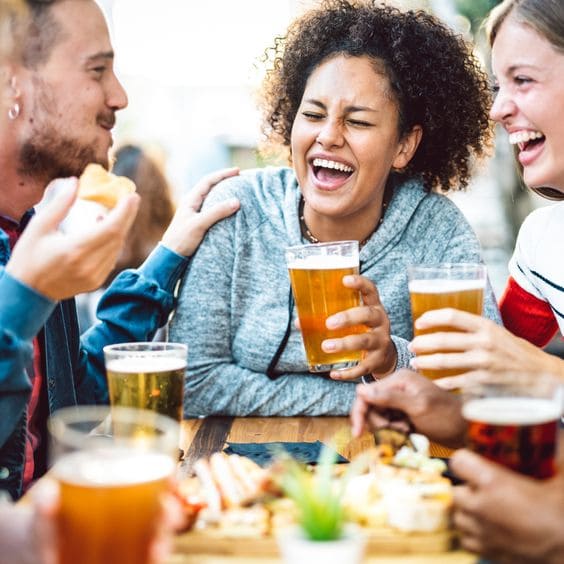
How Many Beers is 0.08 BAC?
How many beers is .08 can vary depending on several factors such as the individual’s weight, gender, and rate of alcohol metabolism. However, as a general guideline, consuming approximately 4-5 standard beers can result in a BAC of 0.08% for an average-sized adult male. For an average-sized adult female, it may take around 3-4 standard beers to reach the same BAC level.
So, now you have known 08 alcohol level is how many beers, it’s necessary to know your limit and drink responsibly to avoid any risks.
How many beers an hour is .08?
So, how many beers is .08 within an hour? Many experts believe that consuming about 3 standard drinks within an hour can result in a BAC of 0.08% for an average-sized adult. This equates to approximately 36 ounces of beer, 15 ounces of wine, or 3 shots of liquor within one hour
How many beers is .08 200lbs?
How many beers is .08 for a 200lbs person? The number of beers it takes to reach a BAC of 0.08% for a person who weighs 200 lbs can vary depending on several factors such as the rate of alcohol metabolism and other individual factors. However, as a general guideline, consuming approximately 4-5 standard beers within two hours can result in a BAC of 0.08% for an average-sized adult male who weighs 200lbs. [2]
How many beers is .08 for a 190 lb male?
How many beers to get to 08 for a 190lb male? For a 190-pound male, consuming approximately 4-5 standard beers within two hours can result in a BAC of 0.08%.
How many light beers is .08?
How many beers does it take to get to 08 for light beers? As a general rule, an average-sized adult male can get a BAC of 0.08% by drinking about 5–6 light beers in less than two hours. For a woman of average size, it might take 4–5 light beers over the course of two hours to reach the same BAC level.
How Many Beers is over .08?
As a rough estimate, an average-sized adult male may reach a BAC over 0.08% by consuming around 6-7 standard beers within two hours. Meanwhile, an average-sized adult female may reach the same BAC level by consuming approximately 5-6 standard beers within two hours.
DUI Laws and Penalties
Driving under the influence (DUI) is a serious offense that can result in severe legal consequences. Charges for impaired driving can range from misdemeanors to felony offenses, depending on the severity of the situation. Penalties for DUI can include driver’s license revocation, fines, and even jail time.
According to the National Highway Traffic Safety Administration (NHTSA), a first-time DUI offense can cost a driver upwards of $10,000 in fines, legal fees, and other expenses. This includes court costs, towing fees, and increased insurance rates. Repeat offenders may face even higher penalties, including longer license revocation periods, mandatory alcohol education or treatment programs, and increased fines and jail time.
How Long Does Alcohol Stay in Your System?
Besides understand how many beers is .08, it’s also necessary to know how long does alcohol stay in your system. The amount of time that alcohol stays in your system can vary depending on several factors, including the amount and type of alcohol consumed, the individual’s weight and metabolism, and other individual factors.
As a general guideline, alcohol can stay in your system for up to 24 hours after drinking. However, this can vary depending on the amount of alcohol consumed and the individual’s rate of metabolism.
Alcohol is primarily metabolized by the liver at a rate of approximately one standard drink per hour. This means that if a person consumes four standard drinks, it can take up to four hours for their body to fully metabolize the alcohol.
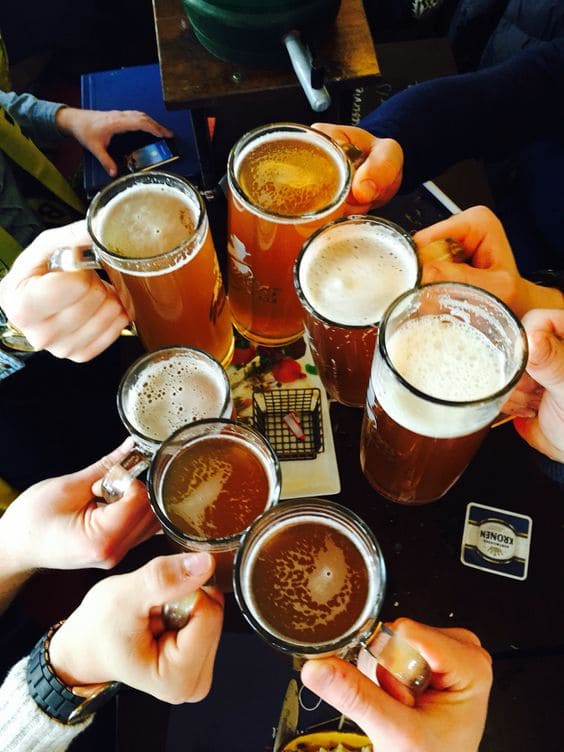
Can You Drive After Drinking One Beer?
It is not recommended to drive after drinking any amount of alcohol, including one beer. Even a small amount of alcohol can impair your judgement, coordination, and reaction time, which can increase the risk of accidents while driving.
The legal limit for blood alcohol concentration (BAC) varies by country, but in most places, it is 0.08%. Even if your BAC is below the legal limit, you should still avoid driving after consuming alcohol, as you may still experience impairment that can put you and others on the road at risk. It is always best to plan ahead and arrange for a designated driver, take public transportation, or use ride-sharing services if you plan to consume alcohol.
The Risks of Driving with a BAC over .08
Driving with a blood alcohol concentration (BAC) over the legal limit of 0.08% can have serious consequences. Here are some of the risks of driving with a BAC over the legal limit:
- Impaired driving: Even small amounts of alcohol can impair your judgment, coordination, and reaction time, making it harder to drive safely. As your BAC increases, so does the level of impairment, making it more difficult to control your vehicle.
- Increased risk of accidents: Driving with a BAC over the legal limit increases the risk of accidents. Impaired drivers are more likely to cause accidents, and those accidents are more likely to result in serious injuries or fatalities.
- Legal consequences: If you are caught driving with a BAC over the legal limit, you may face legal consequences such as fines, license suspension, or even jail time, depending on the severity of the offense and your previous driving record.
- Higher insurance rates: A DUI or DWI conviction can lead to higher insurance rates, which can be a significant financial burden.
- Personal consequences: Driving with a BAC over the legal limit can also have personal consequences, such as feelings of guilt, shame, and embarrassment. It can also damage your reputation and relationships with friends and family.
Overall, it is important to avoid driving after drinking any amount of alcohol, and to always plan ahead for a designated driver or alternative transportation if you plan to drink.
How to Reduce BAC?
There is no guaranteed way to reduce your blood alcohol concentration (BAC) other than waiting for your body to process the alcohol naturally. However, there are some things you can do to help speed up the process and reduce your BAC more quickly:
- Stop drinking: The first and most important step is to stop drinking alcohol. Your body can only process alcohol at a certain rate, and continuing to drink will only increase your BAC.
- Drink water: Drinking water can help to dilute the alcohol in your system and flush it out of your body more quickly. Aim to drink a glass of water for every alcoholic drink you consume.
- Eat food: Eating food can help slow down the absorption of alcohol into your bloodstream, which can reduce your BAC. Focus on consuming foods high in protein and complex carbohydrates.
- Wait it out: The only way to completely eliminate alcohol from your system is to wait for your body to metabolize it. This can take several hours, depending on the amount of alcohol you consumed and your body weight.
- Exercise: Exercising can help to increase your metabolism and speed up the processing of alcohol in your body. However, it is important to note that exercising may also cause you to become dehydrated, so be sure to drink plenty of water.
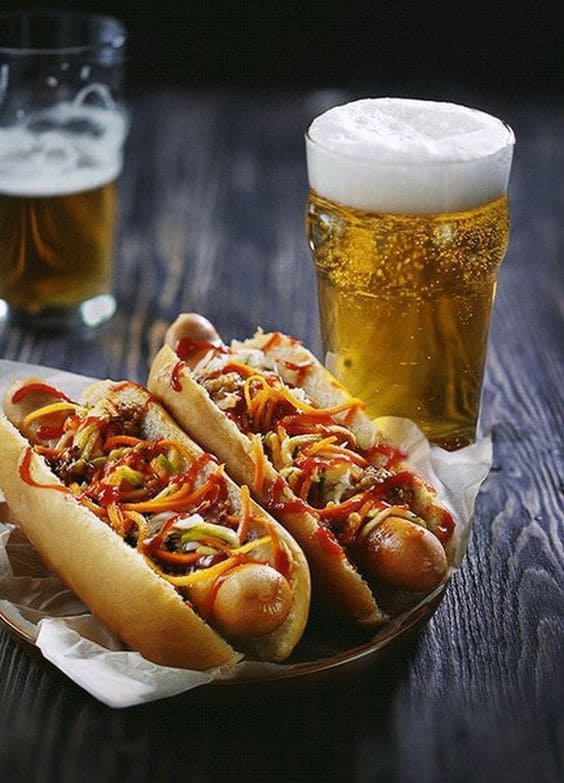
How to Prevent Drunk Driving?
Drunk driving is a serious problem that can lead to accidents, injuries, and fatalities. Here are some steps you can take to help prevent drunk driving:
- Plan ahead: If you plan on drinking, always plan ahead for a designated driver or alternative transportation. This can include taking a taxi, using a ride-sharing service, or using public transportation.
- Be responsible: If you are hosting a party or event where alcohol will be served, be responsible and make sure that your guests have a safe way to get home. This can include arranging for a designated driver or offering to call a taxi or ride-sharing service.
- Intervene: If you see someone who is about to drive while impaired, intervene and offer to call a taxi or ride-sharing service for them. If necessary, offer to let them stay with you or find a safe place for them to stay for the night.
- Educate others: Help raise awareness about the dangers of drunk driving by educating others about the risks and consequences. Share statistics and stories about the impact of drunk driving on individuals and communities.
- Support prevention efforts: Support prevention efforts in your community, such as campaigns to raise awareness about drunk driving and initiatives to increase enforcement of DUI laws.
By taking these steps, you can help prevent drunk driving and promote safer roads for everyone. Remember, even one drink can impair your ability to drive safely, so it is important to plan ahead and make responsible choices when it comes to drinking and driving.
FAQs
What is my BAC after 2 beers?
The amount of alcohol in 2 beers can vary based on factors such as the type of beer, alcohol content, and your weight and metabolism. However, as a general rule of thumb, 2 beers could potentially raise your blood alcohol concentration (BAC) to around 0.05-0.06%, which is close to the legal limit for driving in some countries. It is always safest to avoid driving after consuming any amount of alcohol.
Is 1.3 alcohol level high?
A blood alcohol concentration (BAC) of 1.3% is extremely high and can be life-threatening. It is important to seek medical attention immediately if you or someone else has a BAC at this level.
Can drinking water help you pass a breathalyzer?
Drinking water can help to dilute the alcohol in your system and potentially lower your blood alcohol concentration (BAC) over time, but it will not help you “pass” a breathalyzer test if you are already over the legal limit for driving.
Can I drive after 2 beers?
Even after consuming 2 beers, your blood alcohol concentration (BAC) could potentially be above the legal limit for driving in some countries, and your ability to drive safely may be impaired. It is always safest to plan ahead and arrange for a designated driver or alternative transportation if you plan to drink.
Will 2 beers show up on a breathalyzer?
It is possible that 2 beers could raise your blood alcohol concentration (BAC) above the legal limit for driving in some countries, and a breathalyzer test would detect the presence of alcohol in your breath. However, the amount of alcohol in 2 beers can vary based on factors such as the type of beer, alcohol content, and your weight and metabolism.
Does peanut butter help you pass a breathalyzer?
There is no evidence to suggest that consuming peanut butter can help you pass a breathalyzer test.
Will a breathalyzer show if I drink last night?
A breathalyzer test can detect the presence of alcohol in your breath, but the amount of alcohol detected will depend on how much time has passed since you last consumed alcohol, the amount of alcohol you consumed, and your metabolism.
What is blood alcohol level after 2 glasses of wine?
The amount of alcohol in 2 glasses of wine can vary based on factors such as the type of wine, alcohol content, and your weight and metabolism. However, as a general rule of thumb, 2 glasses of wine could potentially raise your blood alcohol concentration (BAC) to around 0.04-0.05%, which is close to the legal limit for driving in some countries.
How do I know if I’m too drunk to drive?
If you are feeling the effects of alcohol, such as impaired judgment, slowed reaction time, or difficulty with coordination, it is likely that you are too drunk to drive. It is always safest to plan ahead and arrange for a designated driver or alternative transportation if you plan to drink.
How long after drinking can I drive?
The amount of time it takes for your body to process alcohol and for your blood alcohol concentration (BAC) to return to 0.00% can vary based on factors such as the amount of alcohol you consumed, your weight and metabolism, and whether you ate food with the alcohol.
Read also
Conclusion
In short, understanding how many beers is .08 is crucial for anyone who chooses to drink and drive. While there are many factors that can influence BAC, such as gender, body weight, and drinking habits, it is important to remember that the legal limit is .08 in most states. Drinking and driving can impair your ability to drive safely, putting yourself and others at risk of injury or death. To avoid the consequences of a DUI conviction and ensure your safety on the road, it is best to always designate a sober driver or find alternative means of transportation after drinking. Remember to always drink responsibly and make smart choices to keep yourself and others safe.
References:
[2] https://www.cullanlawaz.com/documents/blogfiles/BACCharts.pdf
I’m Chen Mina, from Vol de Nuit, who has a special passion for bartending, especially mixing wine, beer, and cooktail. Here you will find content about alcoholic beverages, I will bring you knowledge that few people know about this drink.

